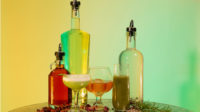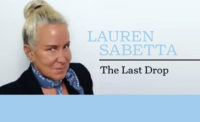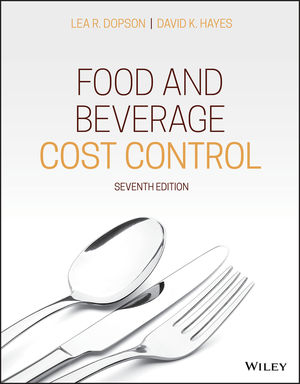Between Drinks
Oktoberfest brings opportunities for U.S. on-premise, report shows
Oktoberfest brings opportunities for U.S. on-premise, report shows

Image courtesy of Getty Images
Running from mid- or late-September to around the first Sunday in October, Oktoberfest is an important part of Bavarian culture, dating back to 1810. Although the main event takes place in Munich, Bavaria, each year — with more than 6 million international and national visitors in attendance — today, celebrations can be found all around the world.
In the United States, places that are notable for Oktoberfest festivities include Frankenmuth, Mich., dubbed Michigan’s Little Bavaria; Cincinnati, Ohio, where its Oktoberfest Zinzinnati event boasts the title of “America’s largest Oktoberfest”; and Helen, Ga., a town located at the base of the Appalachian Mountains that was literally built for Oktoberfest in 1969 in an effort to bolster the local economy.
As autumn approaches and Oktoberfest starts to occupy the minds of beer drinkers, Union, a hospitality engagement platform, released a new report detailing the latest on-premise Oktoberfest consumption trends at thousands of bars and restaurants across the United States.
The report provides the following key insights around Oktoberfest drinking patterns:
- When venues feature Oktoberfest beers on their menus, they are a hit. According to Union’s data, Oktoberfest beers command as much as 67% of beer sales during the months of September and October.
- There is money to be made during Oktoberfest. An average Oktoberfest beer is $7.98, which is $2 (26 %) more than the average beer and 19% higher than the average imported beer.
- Happy hour is an opportunity for Oktoberfest. Sales at Union venues are highest during happy hour, with 39% of all Oktoberfest orders happening between 4 and 7 p.m.
“The big takeaway we saw is that Oktoberfest is no longer limited to German pubs and more bars and restaurants should be taking advantage of this two week festival and pushing beer specials to capture more sales,” said Layne Cox, Union’s chief marketing officer, in a statement. “With the price of Oktoberfest brews being higher than other beers this is a big sales opportunity that many operators should be capitalizing on.”
Further, as the traditional German Oktoberfest festival period runs 16 days, typically ending the first Sunday in October, Union data shows that Oktoberfest beer sales are strong in the United States even after the official festival has concluded.
The Saturday after Oktoberfest has ended shows 29% higher sales than the second Saturday of Oktoberfest proper, according to Union.
“It’s not surprising that Oktoberfest beers sell best past the festival dates, because Americans — very reasonably — associate the beer with autumn and the month October,” Cox added. “From a marketing perspective, it’s a seasonal draw, and it’s exciting that it’s here for a limited time.”
Nevertheless, the Union report notes that only 12% of its venues sold Oktoberfest beers during the official two-week celebration period in 2022. “Yet, Oktoberfest beers are a hit at many venues, commanding as much as 67% of beer sales during the months of September and October,” the report states.
At Union venues overall, Oktoberfest-themed beers — such as the top-selling Sam Adams Octoberfest, Hofbräu, and Spaten — constituted 0.42% of overall beer dollar sales in September and October 2022, and 0.54% during the two weeks of Oktoberfest proper, it says.
For comparison, pumpkin-flavored beers constituted only 0.24 percent of overall beer dollar sales in September and October 2022, according to Union. In other words, Oktoberfest beer sales rake in nearly twice that of pumpkin beers, a fall flavor that has its own cult following, it says.
When it comes to top-selling venues, Cox pointed to a variety of venues capitalizing on Oktoberfest beers outside of German pubs.
“Our data shows that of the top-selling venues of Oktoberfest beers, only a few are German pubs,” Cox noted. “Many of the bars capitalizing on Oktoberfest include Irish pubs, British pubs, sports bars, and more, and they are generating additional business from the beer festival well into October.”
As far as top-selling beer goes, Union’s report points to the classic German “Märzen” style: A copper-colored lager, known for its rich maltiness and baked-bread aromas. The beer style gets its name from the German word for March, when the beer is brewed. It’s traditionally aged throughout the summer and released in time for the fall festival, it notes.
Yet, domestic beers also are making a mark as popular Oktoberfest brews, according to the report.
“Notably, the state of Massachusetts (home to best-seller Sam Adams) has some of the highest sales share for Oktoberfest beers compared to overall beer,” the report states. “And the domestic beers on the list of top-sellers are all ‘big craft,' following brew culture’s most enduring tradition.”
After Sam Adams, the Top 5 Oktoberfest beers are German imports, according to Union.
“Specifically, there are only six beers that are served as official Oktoberfest festival beers in Munich, and four of those show up on Union’s list of top-sellers, as well: Hofbräu, Spaten, Paulaner and Hacker-Pschorr,” the report states. “The beers vary in flavor profile, some made in the traditional Oktoberfest style, and others in a more modern German style.
“What the beers all have in common, though, is their limited availability, usually released in August or September to kick off the fall season,” the report continues. “In Munich, that means lederhosen, yodeling contests, log-sawing and stein-holding competitions, and polka dancing.”
However, if German-inspired fun isn’t a bar’s style, the report suggests reimagining Oktoberfest in a way that suits the venue and appeals to beer-loving guests.
The bottom line: It looks like the U.S. on-premise has plenty of opportunity to capitalize on the Oktoberfest season as consumers shout out Noch ein Bier, bitte — another beer, please.
Looking for a reprint of this article?
From high-res PDFs to custom plaques, order your copy today!








